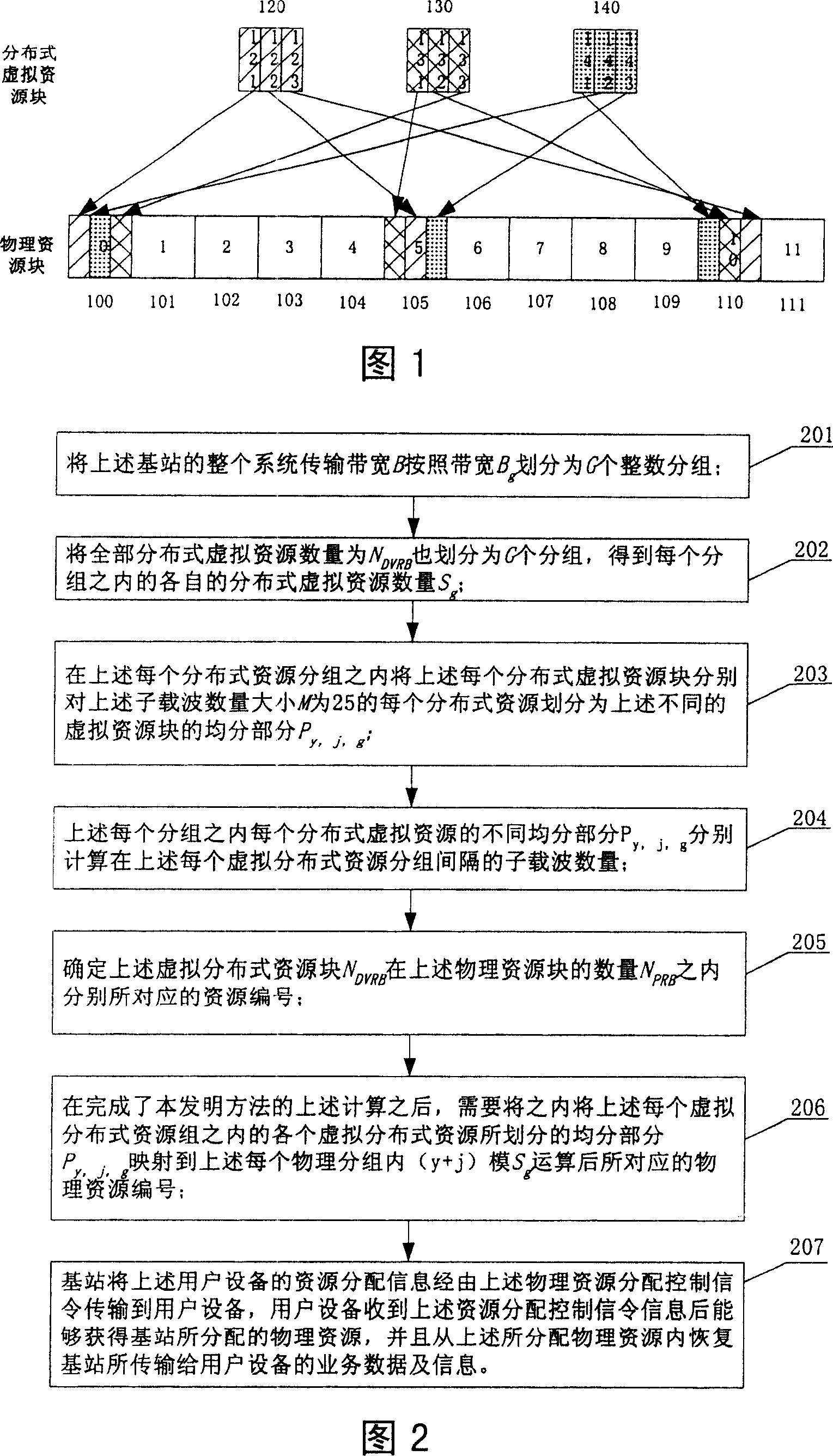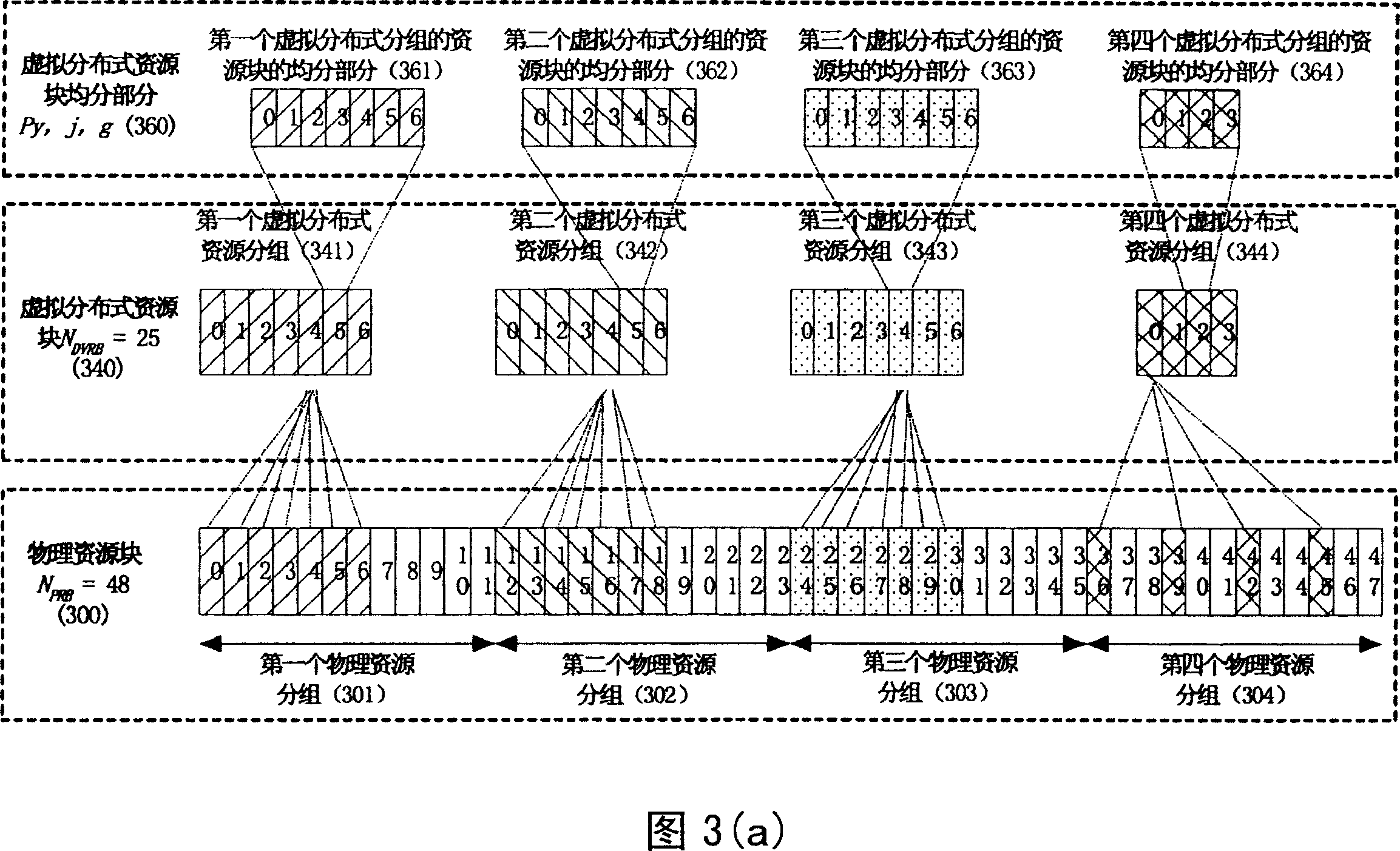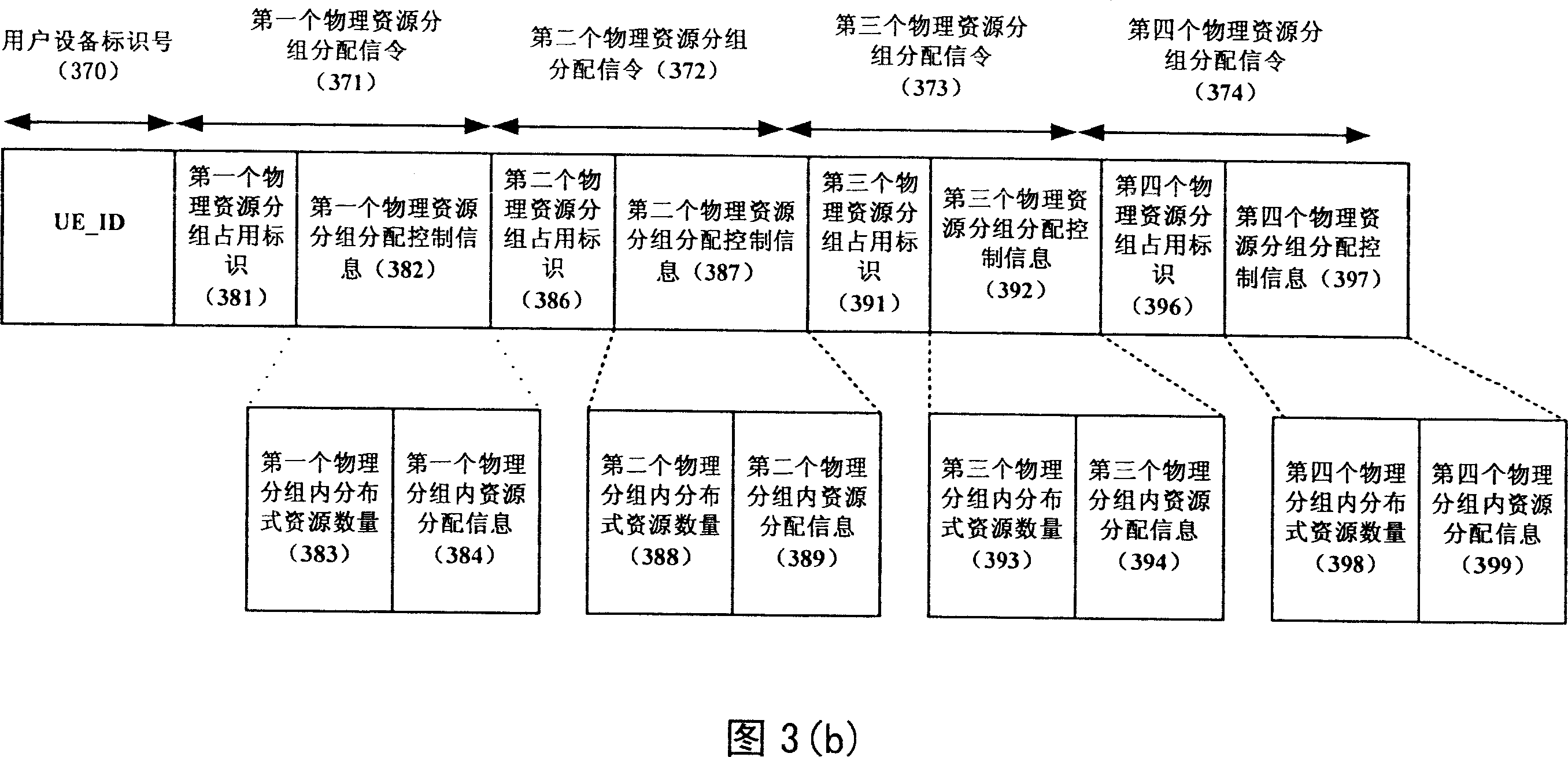Resource allocation and control signaling transmission method
A technology for resource allocation and control signaling, which is used in network traffic/resource management, wireless communication, network planning, etc.
- Summary
- Abstract
- Description
- Claims
- Application Information
AI Technical Summary
Problems solved by technology
Method used
Image
Examples
Embodiment Construction
[0033] The present invention discloses a method for resource allocation and control signaling transmission with reference to FIG. 2, comprising the following steps:
[0034] Step 201: Divide the entire system transmission bandwidth B of the above-mentioned base station according to the bandwidth B g Divide into G integer groupings, where
[0035] G=B / B g (1)
[0036] Step 202: Set the number of all distributed virtual resources to N DVRB It is also divided into G groups to obtain the respective number of distributed virtual resources S within each group g ,in
[0037]
[0038] Step 203: In each of the above-mentioned distributed resource groups, each of the above-mentioned distributed virtual resource blocks is divided into the above-mentioned different virtual resource blocks for each distributed resource of the above-mentioned subcarrier quantity size M (for example, M is 25). the evenly divided part P y,j, g ,in
[0039]
[0040] (3)
[0041] ...
PUM
| Property | Measurement | Unit |
|---|---|---|
| Bandwidth | aaaaa | aaaaa |
Abstract
Description
Claims
Application Information
 Login to View More
Login to View More - R&D
- Intellectual Property
- Life Sciences
- Materials
- Tech Scout
- Unparalleled Data Quality
- Higher Quality Content
- 60% Fewer Hallucinations
Browse by: Latest US Patents, China's latest patents, Technical Efficacy Thesaurus, Application Domain, Technology Topic, Popular Technical Reports.
© 2025 PatSnap. All rights reserved.Legal|Privacy policy|Modern Slavery Act Transparency Statement|Sitemap|About US| Contact US: help@patsnap.com



